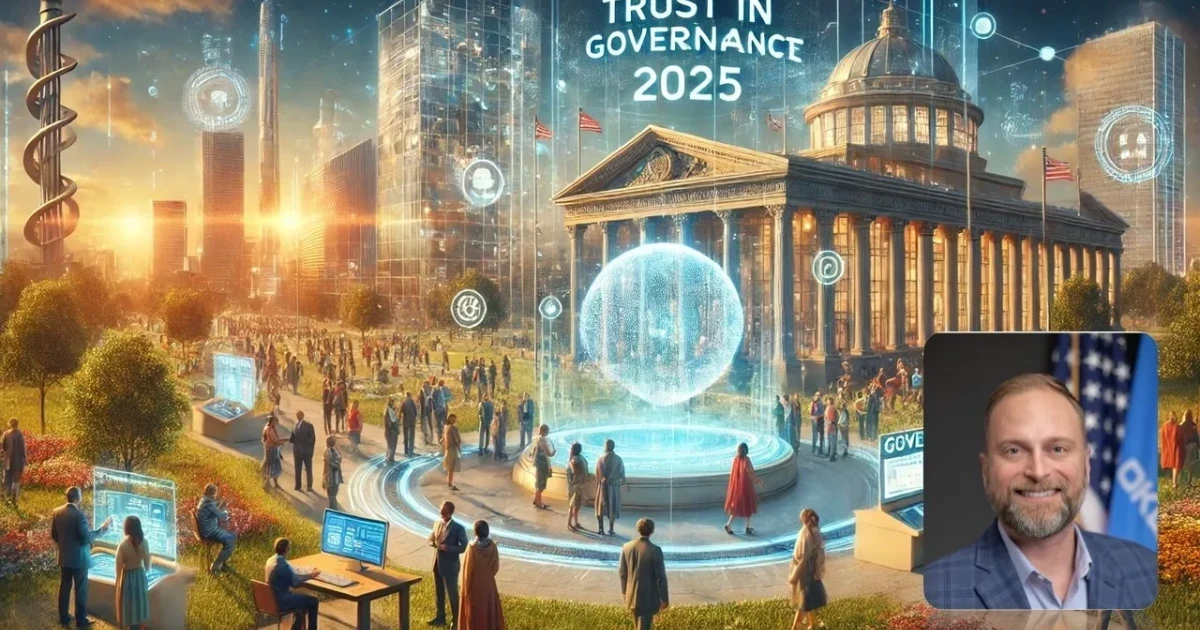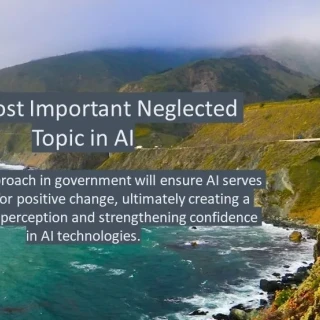2025: The Year of Trust Redefined Between Government and People

Another 2025 Prediction: As we step into 2025, a defining theme for the public sector will move from talk to action: trust. Trust has long been a critical yet often underexplored factor in the relationship between governments and the people who rely on their services. This year, the dialogue around trust is poised to shift from being an abstract ideal to a measurable, actionable goal.
Why is Trust Important?
Early in my tenure as Director of OKDHS, I joined a Child Protective Services social worker on a “ride-along” to investigate a reported case of child neglect. This young social worker, whom I now consider a hero, knocked on a family’s door to inform them of the report and the need for an investigation. Over the next three hours, we spent time with the parents and children (home on fall break), observing their living conditions and engaging in conversation. While there were some cleanliness concerns, it was evident that the parents deeply loved their children. The root issue was poverty.
As we left, I asked the social worker what would happen next. She explained that after interviewing references and conducting further work, she would likely send a letter within 60 days concluding there were no abuse or neglect concerns, and the case would close. I felt compelled to do more. I envisioned leveraging every available resource—from the agency and community partners—to address this family’s poverty as a model for broader systemic change. We convened a multidisciplinary team to focus on this single family, hoping it would inspire a larger effort to help thousands of similar families each year.
Months into this effort, I received an unexpected call from the social worker. She shared that the family had declined every resource we had offered, and the team was recommending moving on to another family. When I asked why, her answer was sobering: “They just don’t want DHS in their lives.”
This experience was a stark reminder of what happens when trust between a system and the people it serves is broken. Without trust, even transformative resources cannot reach those in need. Trust is essential to create pathways for breaking the cycles of poverty that crush human potential.
Why Now?
The convergence of technology, transparency, and the public’s demand for more personalized, human-centered services is creating fertile ground for change. Innovations like AI-driven solutions, human-centered design, and data-informed policy-making are no longer theoretical in government operations—they are becoming practical tools to enhance trust and deliver outcomes.
In my years of public service, I saw firsthand how trust could either be the keystone of transformation or the barrier to progress. When families trusted the systems designed to serve them, outcomes improved, relationships strengthened, and hope flourished. However, when trust was eroded, even the best-intentioned efforts faltered.
Building Trust: Key Areas of Focus
This year, governments must work to define and operationalize trust in tangible ways. Here’s how:
Measuring Trust
Trust is not just a sentiment; it’s an outcome. Governments should adopt metrics like customer satisfaction scores (CSAT), net promoter scores (NPS), and emotional satisfaction scores to assess their impact on trust. Metrics like these provide actionable insights into where trust-building efforts are succeeding and where more work is needed.
Transparency as a Default
People trust systems that are open about their processes, decisions, and outcomes. Transparent data-sharing practices, clear communication of policies, and participatory decision-making are foundational elements.
Proximity and Personalization
The “proximate” delivery model that emphasizes community presence and relational interactions over bureaucratic distance is key to rebuilding trust. This approach ensures people feel seen, heard, and respected, not merely served.
Human-Centered Technology
AI and other advanced technologies should not replace human interactions but complement them. When technology is employed thoughtfully, it enhances access and reliability while leaving room for empathy and care.
Hope as a Metric
Rising hope scores—a measure of whether individuals believe their interaction with a system has improved their chances of achieving positive outcomes—should become a benchmark for all government agencies. Trust is built when people feel that their future is brighter because of their interactions with public systems.
Key Trust and Customer Service Metrics
To effectively build and maintain trust, governments and public sector organizations should prioritize measurable outcomes. These include:
Customer Satisfaction Scores (CSAT): Gauges overall satisfaction with services and identifies areas for improvement.
Net Promoter Scores (NPS): Measures the likelihood that individuals will recommend the service to others, offering insight into trust and perception.
Emotional Satisfaction Scores: Evaluates whether interactions with the system leave individuals feeling respected, valued, and understood.
Hope Scores: Tracks whether individuals believe their interactions improve their chances of achieving positive outcomes, reflecting trust’s impact on long-term well-being.
Service Reliability Metrics: Ensures systems deliver consistent and dependable services, a cornerstone of trust-building efforts.
These metrics, when monitored and acted upon, provide a clear roadmap for fostering trust and enhancing customer service in public systems.
The Road Ahead
In 2025, public sector leaders have the opportunity—and responsibility—to lead with trust. This requires not only clear definitions and metrics but also a commitment to continuous improvement, collaboration, and innovation. By embedding trust-building into every aspect of service delivery, governments can transform from being merely functional entities to becoming institutions that inspire confidence and hope.
I believe that this year will mark the beginning of a new era, one where trust is not only redefined as a cornerstone of effective governance but operationalized through real strategy and effective implementation. This year we will build systems that not only serve needs but also strengthen the bond between governments and their people.
Here’s to 2025, the year of trust put into action.


